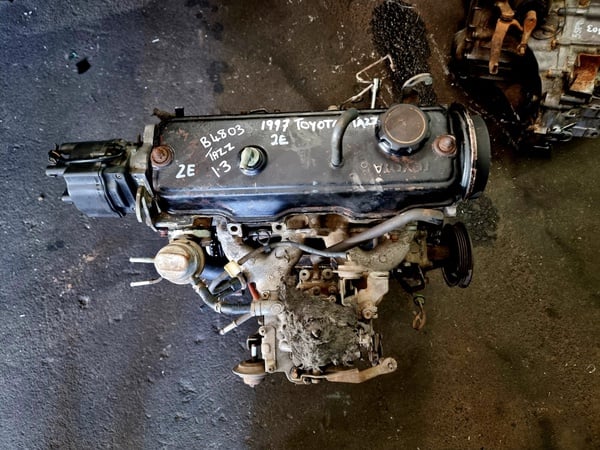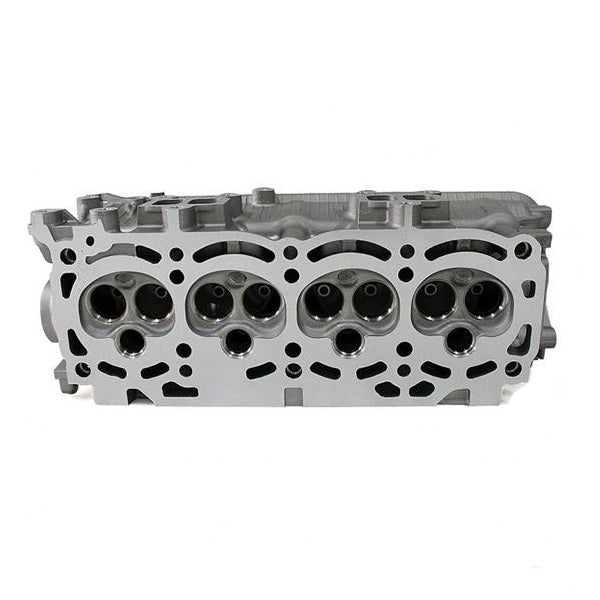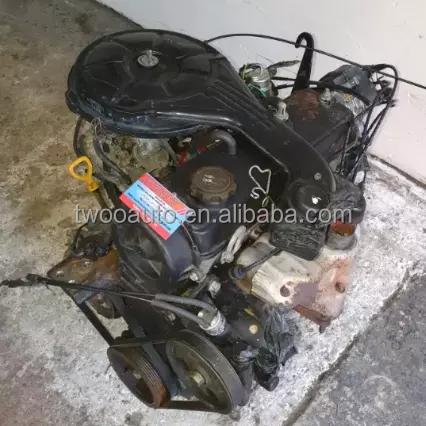Toyota Tazz: An Affordable Car That Doesn’t Compromise on Quality
Toyota Tazz: An Affordable Car That Doesn’t Compromise on Quality
Blog Article
Explore the most recent Trends in Engine Technology Through Tazz
In the swiftly progressing landscape of automobile modern technology, Tazz stands at the leading edge, highlighting substantial improvements in engine systems that prioritize both development and sustainability. tazz. From crossbreed engines that optimize gas effectiveness to the appearance of hydrogen gas cells, the patterns forming contemporary powertrains are not just boosting efficiency yet additionally dealing with essential ecological difficulties. As the industry continues to push limits, it is important to think about exactly how these developments will influence future transport solutions and the more comprehensive effects for international power consumption. What lies ahead in this pivotal makeover?
Crossbreed Engine Innovations
Hybrid engine technologies represent a pivotal change in automobile innovation, integrating the advantages of internal combustion engines with electric propulsion systems. This integration not just improves gas performance but additionally minimizes emissions, conference increasingly strict environmental guidelines. By making use of both power sources, hybrid engines can enhance efficiency, delivering power when required while preserving gas throughout much less requiring motoring conditions.
Recent advancements in hybrid modern technology consist of improvements in battery efficiency and regenerative stopping systems. These advancements permit better power recuperation during slowdown, which can be rerouted to help in velocity or power accessory systems. Manufacturers are concentrating on lightweight products and small styles to make the most of the efficiency of hybrid powertrains.
The growth of plug-in hybrids has actually additionally broadened the marketplace, making it possible for vehicle drivers to charge their vehicles making use of basic electric outlets. This feature commonly permits considerable all-electric array, further decreasing dependancy on traditional fuels. tazz. As the automobile sector proceeds to evolve, hybrid engine modern technologies are anticipated to play an essential duty in linking the space between traditional vehicles and fully electric models, offering a transitional solution that accommodates diverse consumer demands and preferences
Breakthroughs in Electric Powertrains
The vehicle landscape is rapidly developing, with electrical powertrains becoming a leading force in sustainable transportation. Advancements in electric car (EV) technology are significantly boosting performance, performance, and customer experience. Key innovations consist of renovations in battery chemistry, which have actually increased energy density, decreased charging times, and prolonged overall battery life.
Solid-state batteries, for instance, assure to transform the marketplace by supplying higher safety and performance contrasted to typical lithium-ion cells. In addition, advancements in regenerative braking systems are allowing vehicles to recuperate energy during slowdown, adding to overall efficiency.
In addition to battery innovation, electrical motor designs are becoming much more sophisticated. Technologies such as integrated electric motors and progressed thermal management systems are aiding to enhance power shipment and minimize weight, inevitably boosting vehicle characteristics.

Jointly, these breakthroughs emphasize the commitment to shift in the direction of cleaner, much more efficient transport options, positioning electric powertrains at the center of auto development.
The Surge of Hydrogen Gas Cells
Progressively, hydrogen gas cells are acquiring traction as a feasible option to conventional interior combustion engines and battery electric cars. This modern technology takes advantage of the chemical power stored in hydrogen, converting it right into electrical energy through an electrochemical response with oxygen. The key by-product of this procedure is water, making hydrogen fuel cells an eco-friendly option with zero emissions at the tailpipe.

Automakers are increasingly buying hydrogen fuel cell technology, identifying its capacity for long-range applications and rapid refueling abilities that match traditional gas. Additionally, markets such as sturdy transport and public transit are especially appropriate for hydrogen fuel cells, where battery electrical solutions may fail as a result of weight and array limitations.
As study and investment remain to broaden, hydrogen gas cells are positioned to play a significant role in the future landscape of clean transportation and energy remedies.
Enhancements in Internal Combustion Engines
Technologies in interior combustion engine (ICE) technology are transforming traditional vehicles to satisfy contemporary ecological requirements and performance assumptions. Among the most significant improvements includes the integration of innovative fuel shot systems. These systems optimize the air-fuel mixture, enhancing burning performance and leading to reduced exhausts. Straight gas injection, for example, permits far better atomization of gas, leading to even more total combustion and improved power output.
Furthermore, turbocharging has obtained importance, enabling smaller sized engines to provide greater efficiency without the weight of larger engines - tazz. This modern technology not only improves efficiency yet additionally adds to decrease gas consumption. Variable shutoff timing systems are likewise being fine-tuned, allowing engines to adapt to different driving problems for improved torque and responsiveness
Moreover, making use of light-weight materials in engine building and construction is ending up being common, additional boosting gas performance by reducing total vehicle weight. Engine control units (ECUs) are progressively innovative, allowing real-time adjustments that enhance performance and discharges.
These improvements jointly indicate an essential shift in ICE technology, lining up with global sustainability objectives while still supplying the performance drivers anticipate from their cars. As the market develops, these renovations proceed to shape the future of conventional vehicle design.
Future Patterns in Engine Effectiveness
Substantial advancements in engine efficiency are anticipated as producers concentrate on integrating innovative innovations to meet rigorous ecological laws and customer demands. The change in the direction of electrification, crossbreed systems, and alternate fuels is reshaping the automobile landscape, driving developments that improve gas economy and decrease exhausts.
Among the essential trends is the application of advanced materials and making strategies. Light-weight compounds and high-strength alloys add to minimized automobile weight, thus improving total effectiveness. Furthermore, the fostering of turbocharging and variable valve timing innovations enables for improved power outcome from smaller sized engines, further enhancing fuel economy.

Final Thought
To conclude, the exploration of engine innovation discloses significant improvements that prioritize sustainability and efficiency. original site Innovations in crossbreed engine systems, electric powertrains, and hydrogen gas cells demonstrate a dedication to decreasing emissions while improving blog efficiency. Improvements in interior combustion engines and a focus on light-weight materials contribute to overall engine performance. As the automobile sector remains to progress, these patterns will play a vital duty fit a cleaner and even more sustainable future for transportation.
From crossbreed engines that enhance gas effectiveness to the appearance of hydrogen gas cells, the fads forming modern-day powertrains are not just improving performance however likewise addressing vital ecological difficulties.Crossbreed engine advancements represent a critical change in automotive technology, combining the benefits of internal burning engines with electric propulsion systems.In addition, turbocharging has actually gained prestige, allowing smaller engines to supply higher efficiency without the weight of larger engines. In addition, the fostering of turbocharging and variable shutoff timing modern technologies permits for enhanced power result from smaller sized engines, better improving gas economy.
Improvements in inner burning engines and an emphasis on lightweight materials add to overall engine performance.
Report this page